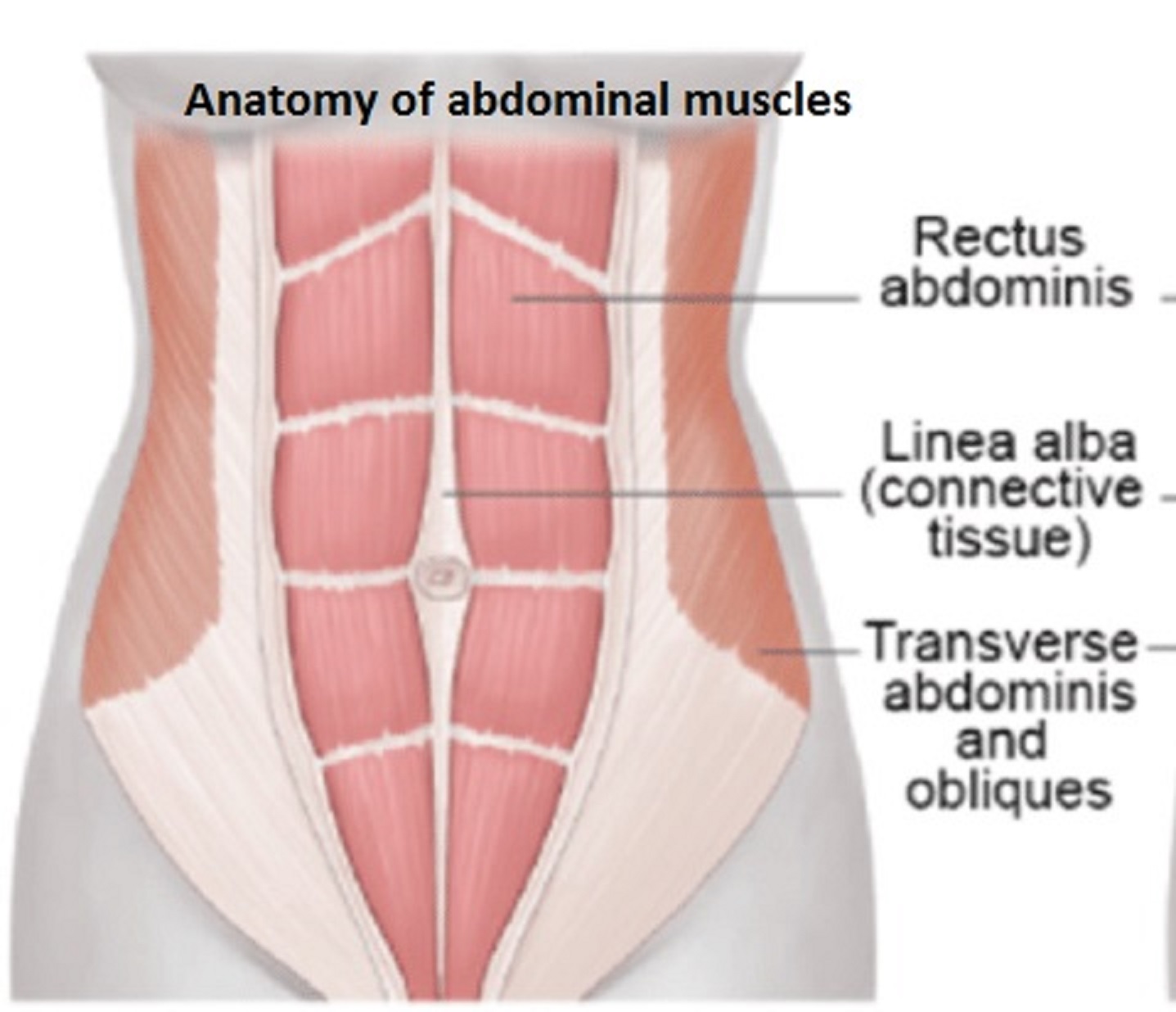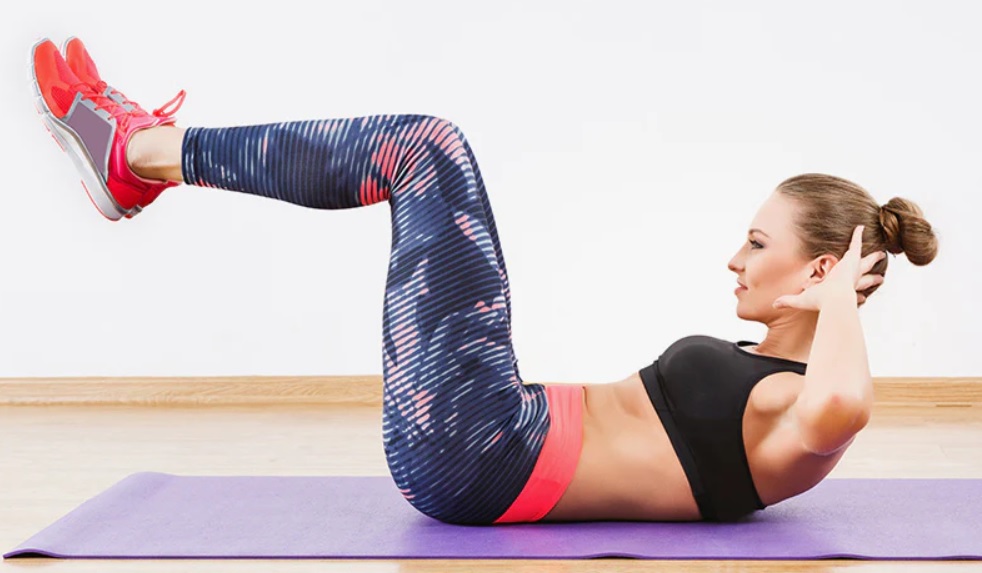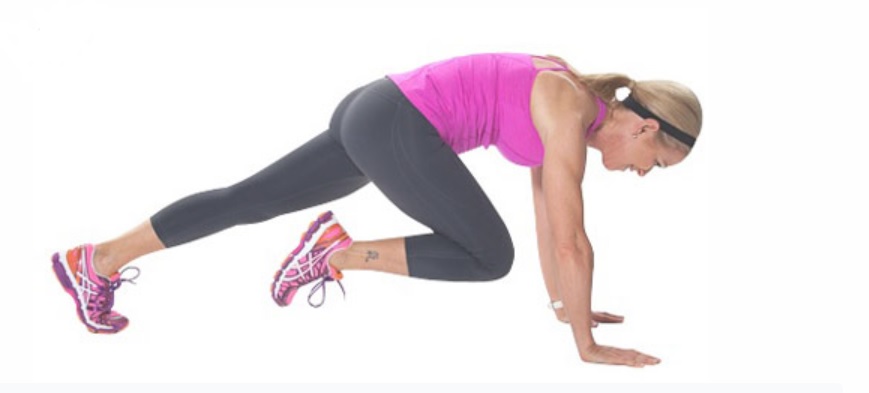Abdominal exercises specifically target the muscles in the abdominal region and play a significant role in transforming the midsection. These exercises primarily focus on strengthening the rectus abdominis, commonly known as the six-pack muscles, as well as the obliques and transverse abdominis. Estimates suggest that a minority of men, approximately 10-20%, have visible six-pack abs. This is commonly attributed to the layer of subcutaneous fat that covers the abdominal muscles, which can obscure their visibility.
Rectus Abdominis: The rectus abdominis is a group of muscles that run in a vertical direction on the front side of the abdominal area. It is responsible for flexing the spine and creating the appearance of a toned, defined midsection. Abdominal exercises that target the rectus abdominis include crunches, sit-ups, and leg raises.

Obliques: The obliques are located on the sides of the abdomen and are responsible for rotational movements and lateral flexion of the spine. Strong obliques can contribute to a slim waistline and improve overall core strength. Exercises that target the obliques include side bends, Russian twists, and bicycle crunches.
Transverse Abdominis: The transverse abdominis, which is the innermost layer of the abdominal muscles serves as a stabilizing force for the spine and core. Strengthening this muscle provides a solid foundation for functional movements and helps in achieving a flat, toned midsection. Exercises that engage the transverse abdominis include planks, bird dogs, and vacuum exercises.
The significance of abdominal exercises in transforming the midsection goes beyond aesthetic improvements. Here are some key benefits:
- Core Strength: Abdominal exercises help develop overall core strength, which is crucial for maintaining stability, balance, and proper posture. A strong core also reduces the risk of back pain and injury.
- Improved Functional Movement: Strong abdominal muscles support and enhance functional movements, such as bending, lifting, twisting, and reaching. This can improve athletic performance and daily activities.
- Enhanced Performance in Sports and Fitness: A strong midsection contributes to improved performance in various sports and physical activities that require core stability, such as running, swimming, weightlifting, and yoga.
- Injury Prevention: Strengthening the abdominal muscles can provide additional support to the spine, reducing the risk of injuries during physical activities and maintaining proper spinal alignment.
- Increased Metabolic Efficiency: Although abdominal exercises alone do not lead to spot reduction of belly fat, regular engagement of these muscles can increase overall metabolic efficiency. By incorporating a well-balanced diet and consistent physical activity, you can effectively manage your weight and achieve a more slender waistline.
- Reduced Lower Back Pain: Weak abdominal muscles can contribute to lower back pain. Strengthening the abs helps alleviate this pain by improving core support, reducing stress on the spine, and promoting proper alignment.
- Enhanced Balance and Stability: Well-developed abdominal muscles contribute to overall balance and stability, improving performance in activities that require coordination and stability, such as yoga, Pilates, and dance.
- Improved Breathing and Digestion: The diaphragm, a key muscle involved in breathing, works in tandem with the abdominal muscles. Strengthening the abs can enhance diaphragmatic breathing, which promotes better oxygenation, relaxation, and improved digestion.
- Aesthetics: Strong abdominal muscles can result in a toned, defined midsection, which is often associated with a fit and healthy appearance. While aesthetics alone should not be the primary focus, having visible abs can be a positive side effect of a strong core.
How to target different areas of the midsection?
To target different areas of the midsection effectively, it’s important to incorporate a variety of exercises that engage specific abdominal muscles. Here are some tips on how to target different areas of the midsection:
Rectus Abdominis (Upper and Lower Abs):
- Crunches: Perform traditional crunches by lying on your back, bending your knees, and lifting your upper body off the ground while contracting your abs.
- Reverse Crunches: To perform the exercise, lie on your back and bring your knees up, then lift your hips off the ground by tilting your pelvis upward.

Obliques (Side Abs):
- Russian Twists: Sit on the ground, lean back slightly, and twist your torso from side to side while holding a weight or medicine ball.
- Standing Side Bends: Stand straight with your feet shoulder-width apart, hold a weight in one hand, and bend sideways, focusing on engaging the oblique muscles.
Transverse Abdominis (Deep Core):
- Planks: Hold a push-up position with your body straight and supported by your forearms and toes. Focus on engaging the deep core muscles.
- Bird Dogs: Start on your hands and knees, extend one arm forward while extending the opposite leg backward, and maintain a stable core throughout.
Lower Abs:
- Leg Raises: Lie on your back, lift your legs straight up, then lower them back down without touching the ground. Focus on using your lower abs to control the movement.
- Mountain Climbers: Start in a push-up position and alternate bringing your knees toward your chest in a running motion.

The Importance of Proper Form in Abdominal Exercises
Maintaining proper form and technique during abdominal exercises is crucial for maximizing the effectiveness of the exercises and minimizing the risk of injury. Here are some key reasons why maintaining proper form is important:
- Target the Right Muscles: Proper form ensures that you are targeting the intended abdominal muscles. It helps isolate the specific muscles you are trying to work, allowing for more effective muscle activation and development.
- Avoid Compensation and Imbalances: Proper form prevents you from compensating by using other muscle groups to perform the exercise. This helps avoid muscle imbalances and ensures that the targeted muscles are doing the majority of the work.
- Enhance Stability and Core Strength: Proper form during abdominal exercises promotes stability and core strength. It helps engage the deep core muscles, including the transverse abdominis, which provides a strong foundation for overall stability and functional movements.
- Improve Posture: Maintaining proper form during abdominal exercises helps improve posture by strengthening the muscles that support the spine and pelvis. Good posture not only enhances appearance but also reduces the risk of back pain and related issues.
- Increase Efficiency and Effectiveness: Performing exercises with proper form allows you to execute the movement more efficiently. This ensures that you are getting the most out of each repetition, maximizing the benefits of the exercise.
To maintain proper form during abdominal exercises:
- Focus on engaging the target muscles throughout the movement.
- Keep your core muscles contracted and your spine in a neutral position.
- Breathe naturally and avoid holding your breath.
- Use controlled movements and avoid relying on momentum.
- Start with appropriate resistance or difficulty level and progress gradually.
Designing an Abdominal Workout Routine
To create an effective abdominal workout routine:
- Set clear goals to guide exercise selection and intensity.
- Incorporate compound movements that engage multiple muscle groups.
- Target specific areas of the midsection with exercises like crunches and side bends.
- Vary the intensity by adding weights or using stability equipment.
- Maintain proper form and technique to maximize effectiveness and prevent injuries.
- Allow for sufficient rest and recovery between workouts.
- Be consistent with two to three abdominal workouts per week.
- Combine abdominal workouts with cardio and full-body strength training.
- Listen to your body and modify exercises if needed.
- Consider seeking professional guidance for personalized advice and form correction.
Nutrition and Diet Tips for Abdominal Transformation
When aiming for an abdominal transformation, proper nutrition and diet play a crucial role. Here are some tips to help you maintain a healthy eating plan and support your abdominal goals:
- Caloric Balance: To reduce body fat and reveal your abdominal muscles, you need to create a caloric deficit. Consume slightly fewer calories than your body needs to maintain its current weight. However, ensure that you still meet your nutritional needs and don’t drastically restrict calories.
- Balanced Macronutrients: Focus on consuming a balanced mix of macronutrients, including lean proteins, healthy fats, and complex carbohydrates. Protein helps build and repair muscles, while healthy fats and complex carbs provide sustained energy and support overall health.
- Portion Control: Be mindful of portion sizes and avoid overeating. Use portion control strategies, such as measuring your food, using smaller plates, and being aware of hunger and fullness cues.
- Include Lean Proteins: Incorporate lean protein sources into your meals, such as chicken, turkey, fish, tofu, legumes, and low-fat dairy products. Protein supports muscle growth and helps you feel satiated.
- Choose Whole Foods: Opt for whole, unprocessed foods as much as possible. These include fruits, vegetables, whole grains, lean meats, and healthy fats. Whole foods provide essential nutrients and are generally lower in calories and added sugars.
- Fiber-Rich Foods: Include plenty of fiber in your diet through sources like fruits, vegetables, whole grains, and legumes. Fiber aids digestion, promotes satiety, and helps regulate blood sugar levels.
- Hydration: Maintain proper hydration by ensuring an ample intake of water throughout the day. Water supports digestion, metabolism, and overall health. Limit sugary drinks and opt for water as your primary beverage.
- Minimize Processed Foods and Added Sugars: Limit your intake of processed foods, refined carbohydrates, sugary snacks, and beverages. These can contribute to weight gain and hinder your progress toward abdominal transformation.
- Be Mindful of Alcohol Consumption: Alcoholic beverages can be high in calories and negatively impact your goals. Moderate your alcohol consumption, or consider avoiding it altogether during your transformation period.
- Consistency and Moderation: Adopt a sustainable approach to nutrition and aim for consistency rather than short-term, restrictive diets. Make healthy food choices consistently, but allow yourself occasional treats in moderation to maintain balance and adherence.
To overcome plateaus and challenges in your abdominal transformation journey:
- Vary your workout routine by incorporating different abdominal exercises, changing intensity, or trying new techniques.
- Increase intensity by adding resistance, increasing reps or sets, or shortening rest periods.
- Implement progressive overload by gradually increasing the demands placed on your abdominal muscles.
- Include HIIT and cardio exercises to burn calories, reduce body fat, and enhance abdominal definition.
- Focus on full-body strength training with compound exercises like squats, deadlifts, and push-ups.
- Adjust your nutrition to ensure a caloric deficit for fat loss, tracking intake and prioritizing nutrient-dense foods.
- Allow for sufficient rest and recovery to promote muscle growth and prevent overtraining.
- Maintain consistency in your workout routine and diet to see long-term progress.
- Seek support and accountability from workout buddies, fitness communities, or professionals.
- Celebrate non-scale victories like increased strength, improved endurance, better posture, or increased confidence.
Safety Considerations and Injury Prevention
Safety considerations and injury prevention are paramount when engaging in abdominal exercises. Here are some key tips to help ensure your safety and minimize the risk of injuries:
- Warm up before starting your abdominal workout.
- Learn and practice proper form and technique for each exercise.
- Progress gradually and avoid pushing yourself too hard.
- Pay attention to your body’s signals and stop if you experience pain or discomfort.
- Engage your core muscles and maintain proper core stability during exercises.
- Use appropriate equipment and ensure it is in good condition.
- Take regular rest days to allow your muscles to recover.
- Modify or avoid risky exercises that may strain your spine or neck.
- Stay hydrated before, during, and after your workout.
- Consider consulting a qualified fitness professional for guidance and personalized recommendations.
Real-Life Success Stories and Inspirational Examples
Emily, a working professional, shed excess belly fat and sculpted her midsection by incorporating a combination of high-intensity interval training and clean eating, inspiring others with her dedication and transformation.
Mike, a former couch potato, transformed his midsection through consistent strength training and a focus on portion control, proving that with determination and a healthy lifestyle, anyone can achieve their fitness goals.
Effective Ab Workouts and Proper Treatment for Enhanced Fitness
- Ab-workouts for a ripped physique: Athletes seeking a ripped physique can follow specific above-mentioned workouts that target the abdominal muscles such as crunches while ensuring proper form and alignment of the shoulder blades and maintaining an appropriate angle between each movement.
- Bench press and core engagement: To perform a proper plank exercise start by aligning your elbows beneath your shoulders, engage your core muscles and maintain a straight line from your head to your heels while focusing on contracting the abdominal muscles. Repeat the exercise ensuring proper form and activating the muscles in your arms, shoulders, hips, thighs and feet.
- Considerations for proper treatment: Incorporating bench press into your exercise program can engage multiple muscles including the abdominal muscles as you maintain tension and stability throughout the movement. Ensure proper hand placement with palms facing forward to effectively target the chest and engage the core.
- Engaging abdominal muscles with barbell movements: Depending on the degree of engagement, various muscle groups including the abdominal muscles can be targeted with exercises like barbell movements and aiding in strengthening.
Some Common Questions About Abdominal Muscles
How often should I work out my abs?
It is generally recommended to work out your abs 2-3 times per week, allowing for rest and recovery between sessions.
How long does it take to see results from abdominal exercises?
The time it takes to see results from abdominal exercises varies depending on individual factors such as genetics, diet, and overall fitness level.
Can I get a six-pack by just doing abdominal exercises?
While abdominal exercises can strengthen and tone your core muscles, achieving a visible six-pack also requires low body fat percentage, which involves a combination of exercise, nutrition, and overall body composition.
Are planks better for abs than sit-ups?
Planks can be an effective exercise for activating and strengthening the core muscles, including the abs, and may provide a more balanced approach compared to sit-ups.
Can I lose belly fat by doing only abdominal exercises?
While abdominal exercises can contribute to overall fat loss, spot reduction is not possible, and a combination of cardiovascular exercise, strength training, and a balanced diet is crucial for losing belly fat.
Can I do ab exercises if I’m pregnant?
If you’re pregnant, it is important to consult with your healthcare provider before doing ab exercises to ensure they are suitable for your individual circumstances.
How do I prevent neck strain while doing abdominal exercises?
To prevent neck strain, you can place your hands lightly behind your head without pulling on your neck or focus on keeping your gaze towards the ceiling during abdominal exercises.









